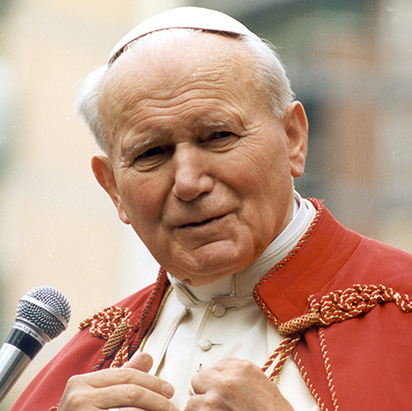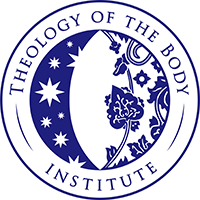

Top Three Favorite Quotes from Saint John Paul II’s Theology of the Body
Top Three Favorite Quotes from Saint John Paul II’s Theology of the Body

I was recently asked what my favorite quotes are from Pope John Paul II’s Theology of the Body. There are so many gems it’s hard to narrow them down, but if I were forced to say, these would be my top three:
- “The body, in fact, and only the body, is capable of making visible what is invisible: the spiritual and the divine. It has been created to transfer into the visible reality of the world, the mystery hidden from eternity in God, and thus to be a sign of it” (TOB 19:4).
This is John Paul II’s thesis statement, the brush with which he paints his entire catechesis on the body. We can’t see spiritual and divine realities. By definition, they’re invisible. But the body makes them visible. If we are seeing the body correctly, what we see is the divine and spiritual story being told. What is that story? In a word – communion. A man’s body makes no sense by itself. Nor does a woman’s. But seen in light of each other we discover the glorious call to life-giving communion. And this is a sign of the inner life of God. Which brings us to my next favorite…
- We “can deduce that man became the image of God not only through his own humanity, but also through the communion of persons, which man and woman form from the very beginning. The function of the image is that of mirroring the one who is the model, of reproducing its own prototype. Man becomes an image of God not so much in the moment of solitude as in the moment of communion.” This “constitutes, perhaps, the deepest theological aspect of everything one can say about man. … On all this, right from the beginning, the blessing of fruitfulness descended” (TOB 9:3).
Here John Paul II presents an important and rather dramatic development in Catholic thinking. Traditionally, theologians have said we image God as individuals, through our rational soul. This is certainly true. But John Paul II takes it a step further. Although he never lines up husband, wife, and offspring with specific Persons of the Trinity, he maintains that the life-giving communion of man and woman in “one flesh” is meant to image the interior life of God. Astounding. So often our notion of sex has been pulled down into the gutter. John Paul II, exposing our sexuality to the purifying light of God’s original plan, raises it to heights unimaginable. And that brings me to my third favorite…
- “Christian ethos is characterized by a transformation of the human person’s conscience and attitudes…such as to express and realize the value of the body and sex according to the Creator’s original plan” (TOB 45:3).
The word “ethos” refers to the interior orientation of our hearts – what attracts us, what repulses us. All of us, because of original sin, are in need of sexual re-orientation in order to reclaim God’s original plan for sexual desire. In the beginning before sin, sexual desire was experienced as nothing but the desire to live and love divinely, in the image of God. Needless to say, this is not the way we experience sexual desire on this side of the fall. As this quote makes abundantly clear, living the Christian life is not a matter of repressing our desires, but of redeeming them. And there is real power flowing from the death and resurrection of Christ to redeem our sexuality! If we continually allow our selfish, lustful desires to be crucified with Christ, he will continually raise up in us a redeemed eros that enables us to live and love in the divine image. Lord, teach us the way of this interior transformation!
Question: Do you have favorite quotes from the TOB? What struck you in the above reflections? Join the conversation on this article’s Facebook and Twitter posts.



